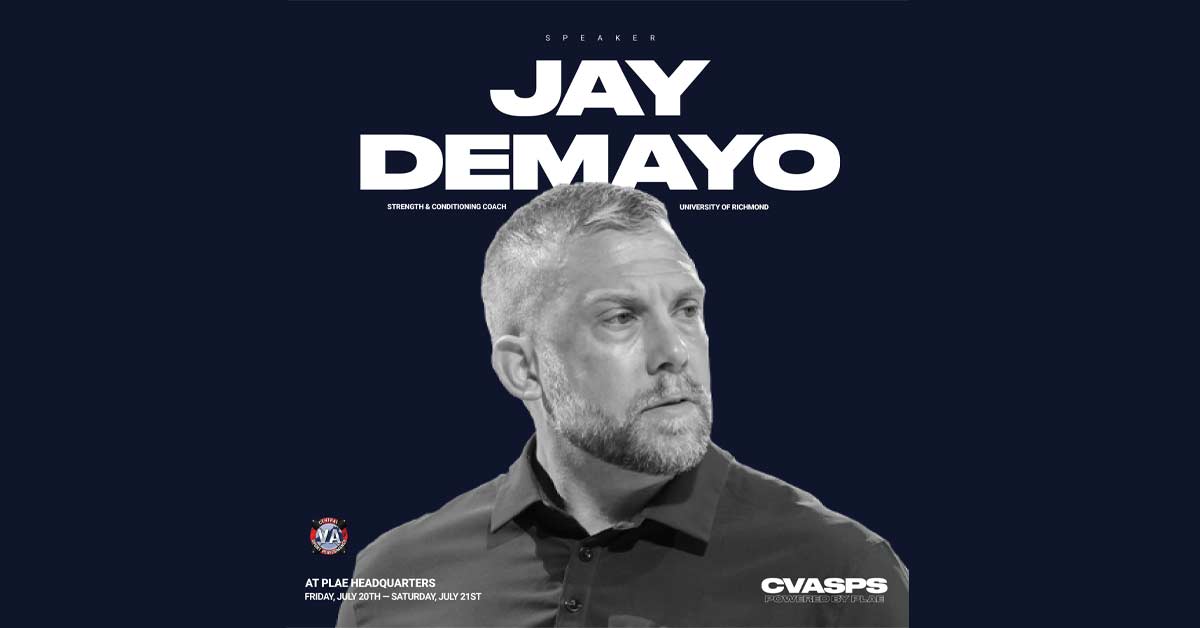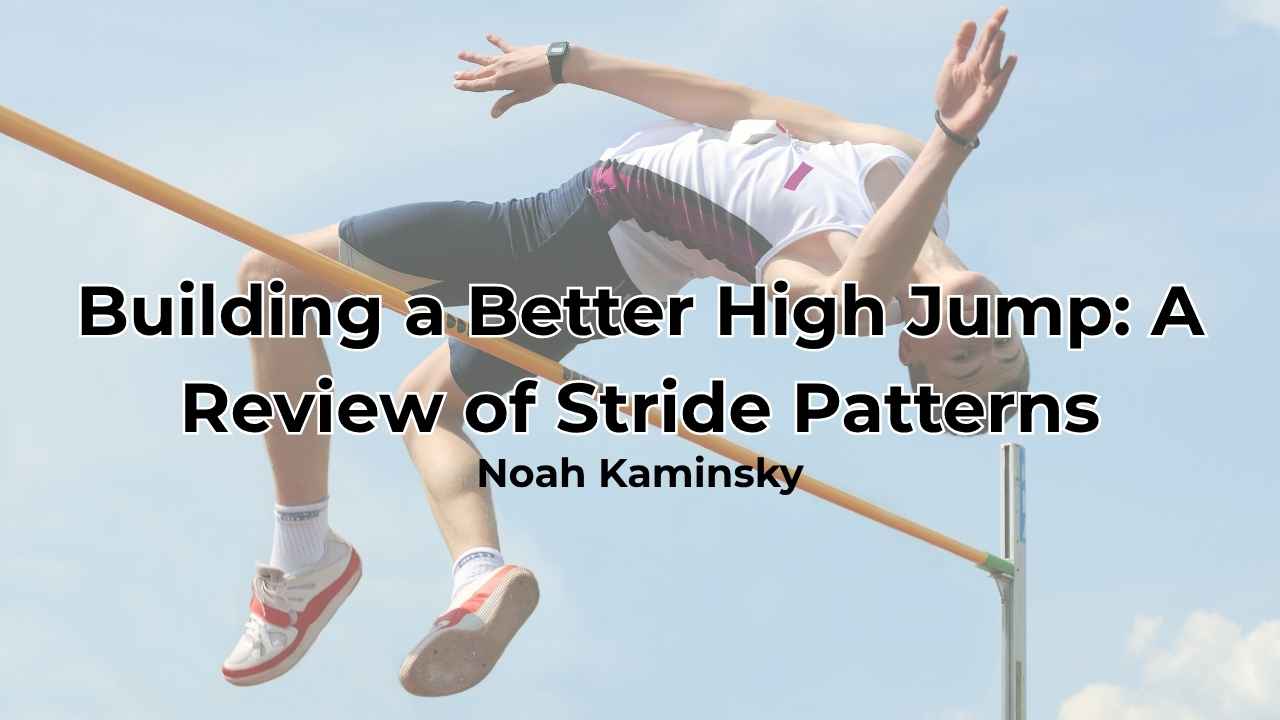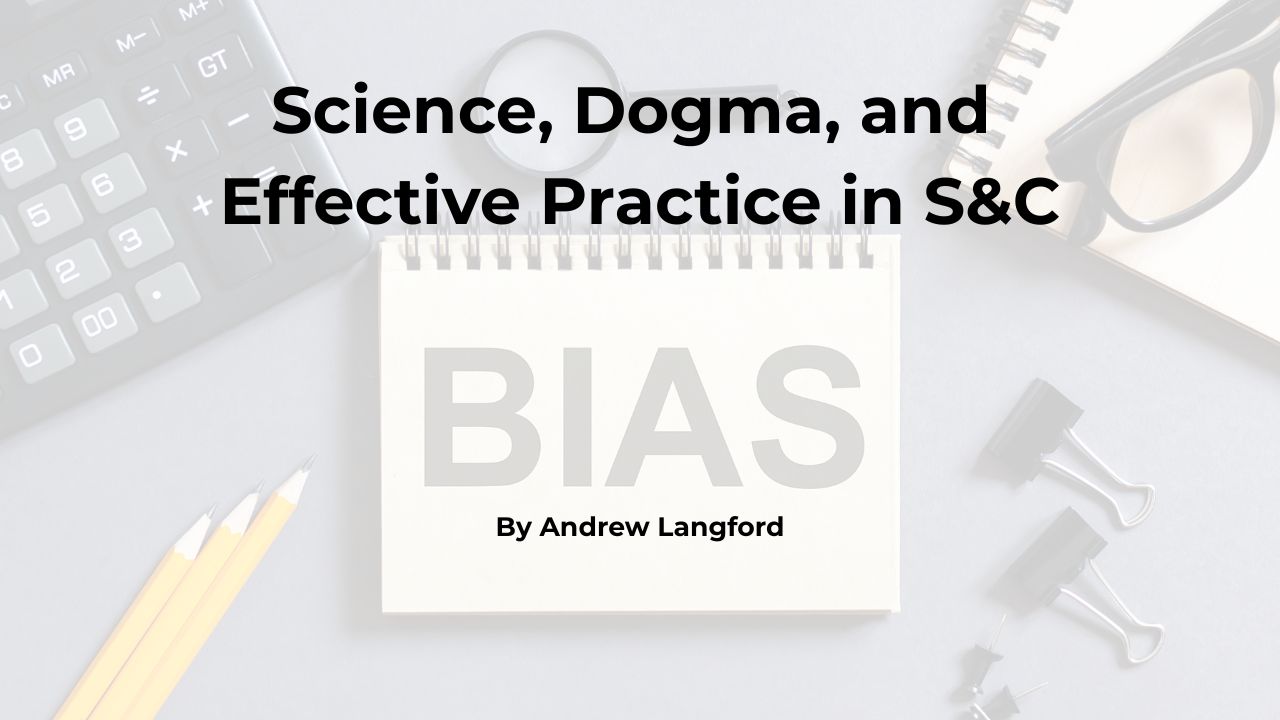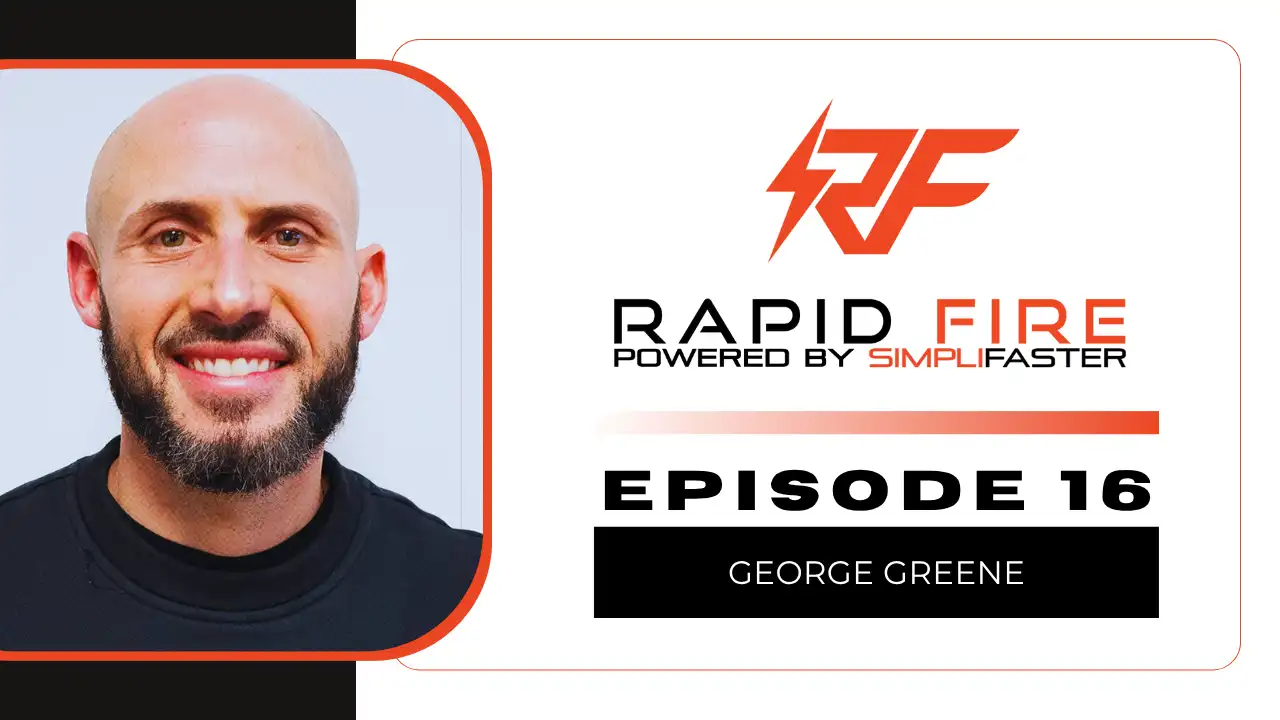I’m really excited that Nathan and all the great people at SimpliFaster have allowed us to introduce you to our lineup of presenters for The 2023 Seminar, which will be held July 21 and July 22 at PLAE HQ in Canton, Georgia. Moving the event to a new location has allowed me to take a bit off my plate and provided an opportunity to step on stage and share some of what we do here in Richmond with our student-athletes. I’m excited to discuss the thought process and systems we have built here over the past 19 school years (you don’t get the name “Graybeard” because you stay young) and, hopefully, walk out with better ideas on how I (selfishly) can improve them.
Through this six-article series, I hope that SimpliFaster readers will come away with a better understanding of what drives the practitioners who will be speaking in July. I figured we would get me out of the way first and then bring in the real headliners who will—for sure—be the best lineup in the U.S. this year. I hope you’re able to join us, but first, enjoy our Q&A sessions.
CVASPS: What are a handful of the mistakes you routinely see made by strength and conditioning coaches in the United States and around the world, and what specifically do you feel should be done differently to correct these issues?
Jay DeMayo: In the world today, we are bombarded with information. There are hundreds of books (guilty of contributing) and podcasts (yup, guilty again) that get released yearly in our vocation. Tie in Twitter, Instagram, and Facebook (okay, I get it, I’m old—I’m still on Facebook), and you have a complete oversaturation of information in our space.
This oversaturation has led to a change in how we vet whom we learn from. At one time, it was the professors who did the research and coaches who led from the front, trying new methods with success in winning. Today, it’s who has the most followers or clout on IG, who can speak the loudest on Twitter, or who puts out the coolest infographics or videos. Don’t get me wrong, I’ve fallen into the trap here as well, and it’s led me to ask this question to each person/company I associate with/learn from: Do you do what you say you do?
Let’s say you’re selling a course or giving a talk on speed, asks @CVASPS. Wouldn’t the primary factor on whether your presentation is valid be whether you actually make people faster? Share on XFor example, let’s say you’re selling a course or giving a talk on speed…wouldn’t the primary factor on whether this presentation is valid be: if you do or do not actually make people faster? I’m all for cool-looking drills that are fun for the athletes, but don’t you think it’s pretty important that your speed work make kids faster? So, if someone is selling a speed course, but they don’t get people faster, why buy it?
All too often, we do these things because we listen to what they say or their graphics or videos look cool, but do they do what they say they actually do and is it successful? If people will share more of those “before/after numbers” (like I do here with our 1×20 work—sorry in advance for how awful the audio is—and also here) and/or we ask those questions, it will lead to much better dialogue and greater growth in our profession. If we tie that in with going to the actual source of the information—meaning the person or people who actually came up with the means or methods we are discussing—a lot of fake confusion revolving around how to improve performance would evaporate.
CVASPS: What advice would you give a coach to improve their knowledge as a process of continuing education? By this, I mean, can you point our readers in a few concrete directions to find the scientific and practical information to improve the methods used to improve performance?
Jay DeMayo: Piggybacking off the last question, I think it is to go to the source. All too often, we inadvertently bastardize someone’s life work because of our own biases in training. It’s just human nature to see what we see through our own eyes and put our own little flavor on it. With that in mind, though, you see people doing things differently than what the work of the people who established the means and methods actually states. If you are using the name of their method and not doing it the proper way, it’s not their method.
If you are using the name of somebody’s method but not doing it the proper way, you’re not using their method, says @CVASPS. Share on XA great example of this is HICT, a method that was made famous in Joel Jamieson’s book, originally coined by Dr. Viktor Seluyanov. High-intensity continuous training is performed to help increase the mitochondrial density in the type II fibers, but to activate the type II fibers, what is required? Super high loads, or MAX Intent. But when you look at people who post they’re using this method on “The Gram,” you see people doing step-ups with bands looking so bored and discontent that they could fall asleep. That is not HICT; that is a waste of time and an insult to Viktor’s work.
I probably shouldn’t take things like this as personally as I do, but I do because most of the things that I see people confused about are means and methods that were presented on at The Seminar: how to progress the jumping exercises, what depth jumps and plyometrics are, what extensive vs. intensive means, truly understanding simple energy system development… Oh, and don’t get me started on 1×20. These are all things that were presented on by the people who are the experts on them and who built these systems. They’re things that have been really misunderstood because people listened to someone’s interpretation of someone else’s work rather than going to the source.
Once you have gone through what the originators have said, sure, dig a bit, talk with others who use the method, and see what they see, but let’s keep in mind that most of their first names are “Doctor” for a reason. Chances are they figured out why their way is better than ours at some point already. Not saying that there may not be a better way, just saying that more often than not, they’re right.
CVASPS: For readers unfamiliar with your history, can you provide some background on your niche in the world of athletics, the educational/career path you took en route to your present role, and any notable publications, courses, or products you have available that you’d like to direct readers toward to dive deeper?
Jay DeMayo: I’ve been very fortunate to hold the same position for nearly 20 years. I’ve been granted a lot of leeway to make mistakes and allowed to fall on my face a few times and really grow as a coach. Professionally, I’m the head strength coach for men’s basketball and tennis at the University of Richmond, where I get to work with some really awesome athletes and coaches.
We have put together an exceptional support staff in “The Q” that is truly forward-thinking and pushes each other to be better for the athletes we work with. Our “team behind the team” has really helped me regain my drive for personal and professional growth, so I owe them a lot.
I am also the head strength coach for NOVA Aquatics, where I work with a fantastic head coach and some really great swimmers. I’ve been fortunate to work with an athlete who went on to win an Olympic gold medal and another who won international championships. It must be something in the water (pun intended), because the club keeps putting out swimmers that make U.S. teams and high major college swim squads. I’m really fortunate to have been able to be a small part of it and watch the club’s growth over the past 15 years.
On top of that, I run Central Virginia Sports Performance or, as many refer to it, CVASPS. With CVASPS, we have a yearly event, The Seminar, that will be held at PLAE HQ in Canton, GA (Atlanta suburb), on July 21 and 22. I’m super excited about that and the opportunity everyone at PLAE is providing for us to bring the “200-Person Round Table and BBQ” to a sensational location. Alongside the event, we have a yearly publication, The Manual, which is 10 unique chapters from past contributors on a vast array of topics. Finally, we also have a podcast that has been on and off, but we are back to putting out episodes at the moment. You can find that on your preferred podcast platform under “CVASPS.”
CVASPS: Can you provide a sneak peek at the topic you will be covering at The Seminar, as well as a few useful takeaways on the presentation for those who may not be able to attend?
Jay DeMayo: In my presentation, I will give a breakdown of how we practice reverse engineering in our programming. I plan on giving the 15,000-foot view and then taking a step back and walking through 2–3 specific examples. This will hopefully help coaches:
- Understand how to utilize this thought process in their practice.
- Provide examples of how we did it for them to recycle or alter for their setting.
- Teach the principles we follow to help regress movements to improve transfer.
CVASPS: What’s one question or topic that no one ever thinks to ask you about (or tends to be under-discussed across the board), and what would you like to add on that subject?
Jay DeMayo: I think the biggest things coaches need to talk about more are things outside of coaching, but more specifically, ways we can be better financially. I spoke about it in the last Freelap Friday Five I had the opportunity to participate in. The better your finances are in order, the better a coach you can become because you’re not afraid of the “what ifs.” There are a bunch of different avenues to explore and ways we can better ourselves in that realm; you just need to find the one that is best for you, do your homework, and grow from there.
I think the biggest things coaches need to talk about more are things outside of coaching, but more specifically, ways we can be better financially, says @CVASPS. Share on XI’m grateful for the platform SimpliFaster is providing for us to share information about the event. I hope readers are excited about the opportunity to learn from the docket we have lined up. If you are looking for more information on The Seminar, you can find it here.
Since you’re here…
…we have a small favor to ask. More people are reading SimpliFaster than ever, and each week we bring you compelling content from coaches, sport scientists, and physiotherapists who are devoted to building better athletes. Please take a moment to share the articles on social media, engage the authors with questions and comments below, and link to articles when appropriate if you have a blog or participate on forums of related topics. — SF





